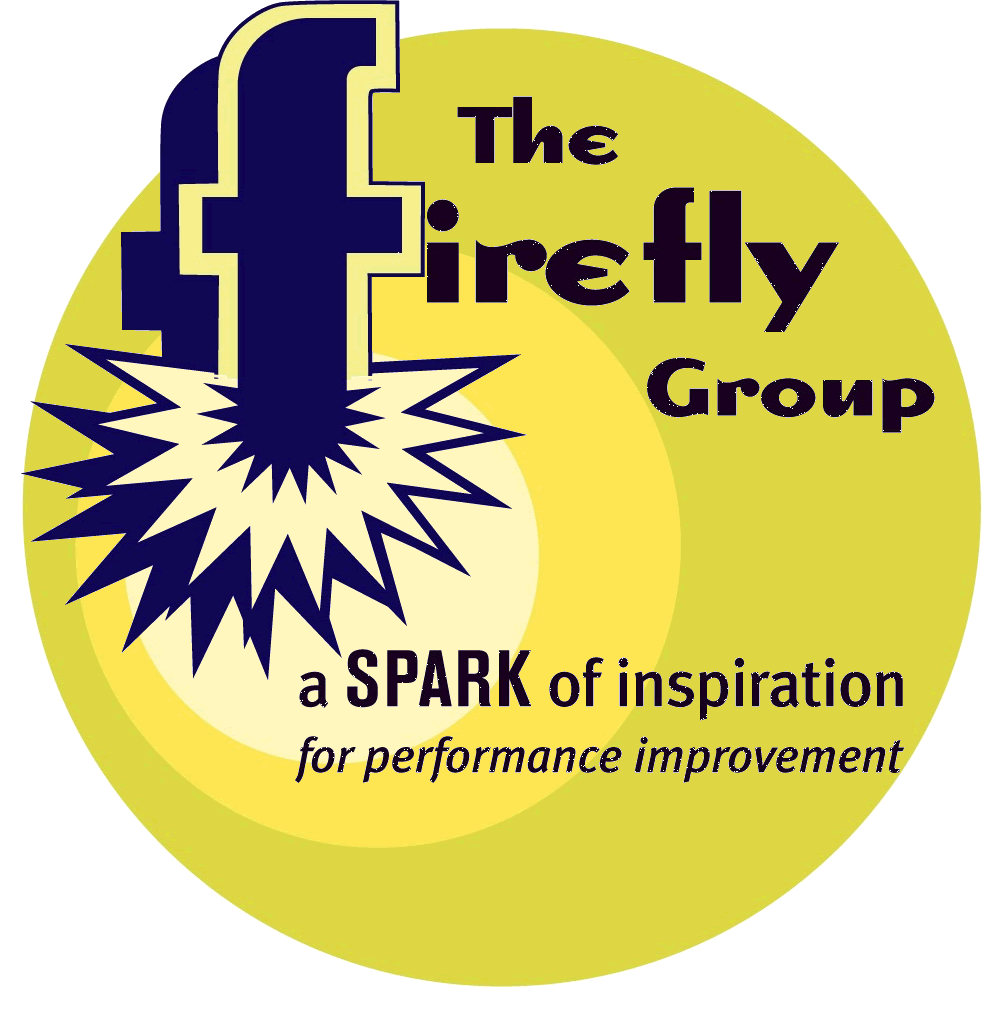

The Firefly Approach
The Firefly Group works with organizations to provide customized facilitation and learning that's inclusive, collaborative, and fun. Here's an example of how we used our expertise to help a public school and its diverse constituencies come to agreement and work toward common goals. How might this process be adapted for your organization?
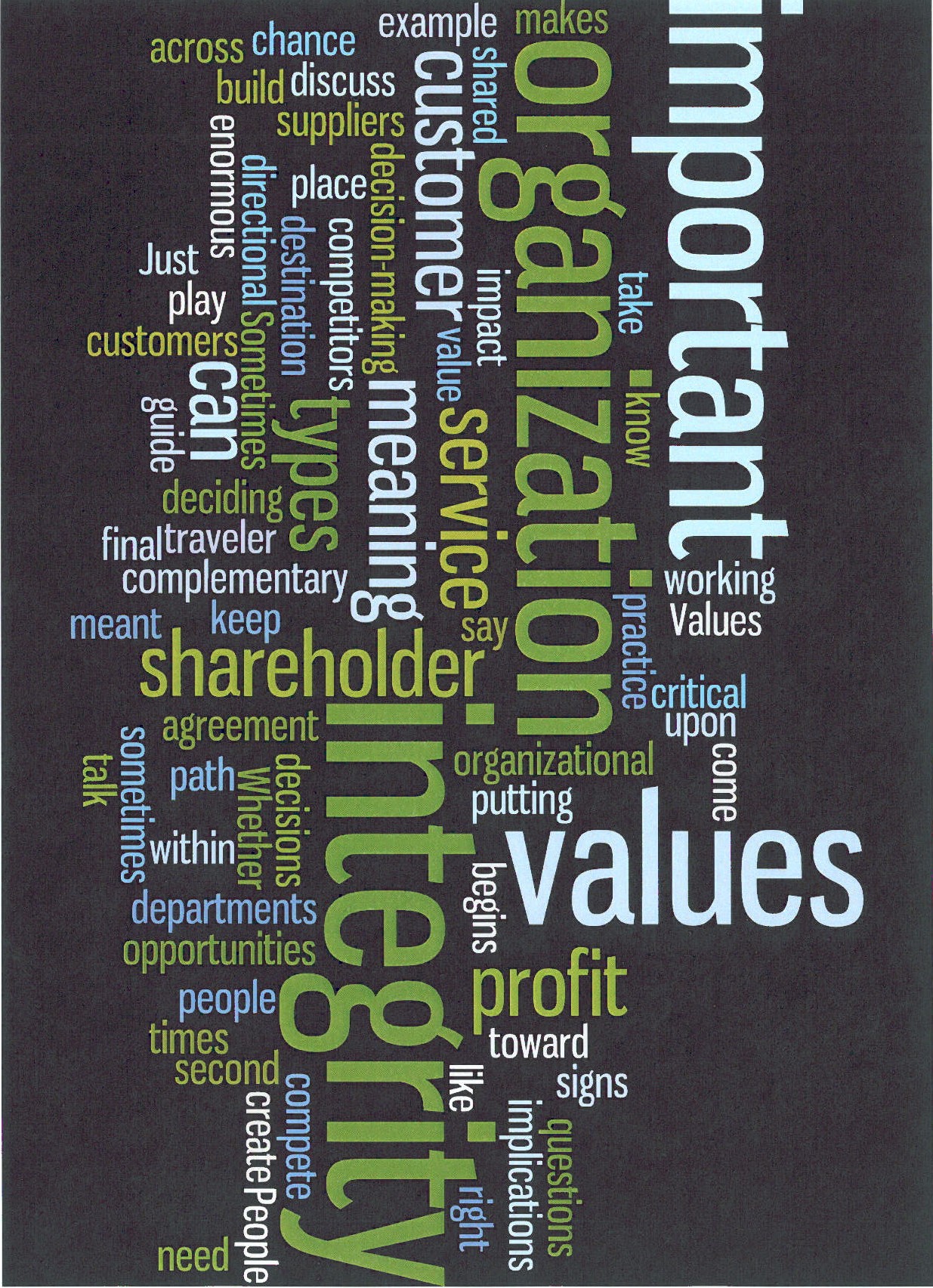
The Value of Values
Values for an organization are like directional signs for a traveler: they keep you on the right path toward the final destination. Whether customer service, integrity, or shareholder profit is the most important value, for example, will have an enormous impact on the types of decisions an organization makes.
So deciding upon the important values for your organization is critical. Just as important is agreement within your organization about the meaning of those values. People need to know what is meant by, say, "integrity." What are the implications for working with integrity across departments, with customers, or with suppliers? How should integrity come into play with our competitors? Are there times integrity should take second place after shareholder profit or customer service?
When people have a chance to discuss these types of questions, they build a shared meaning that begins to guide their decision-making. Sometimes values can be complementary and sometimes they can compete with each other. That's why it's so important to create opportunities to talk about putting organizational values into practice.
An Illustration
Working with students, parents, teachers, and administrators in a public school, we were able to implement a process of continuous conversation about the newly identified values for the school. During a series of four meetings over the course of three months, a diverse group of participants had determined that the school's operational values should be Resourcefulness, Honesty, Responsibility, Kindness, and Equal Opportunity. We placed these values on a five-by-five matrix to show how each value could be paired with every other value twice in the grid of twenty-five squares. (Figure 1)
|
|
Resourcefulness
|
Honesty
|
Responsibility
|
Kindness
|
Equal
Opportunity
|
|
Resourcefulness
|
1
|
2
|
3
|
4
|
5
|
|
Honesty
|
6
|
7
|
8
|
9
|
10
|
|
Responsibility
|
11
|
12
|
13
|
14
|
15
|
|
Kindness
|
16
|
17
|
18
|
19
|
20
|
|
Equal
Opportunity
|
21
|
22
|
23
|
24
|
25
|
To facilitate conversations, people were divided into groups of three to five diverse members. Each group chose a square on the matrix and had the challenge of writing a statement about the interaction of the two values whose row and column intersected at their square.
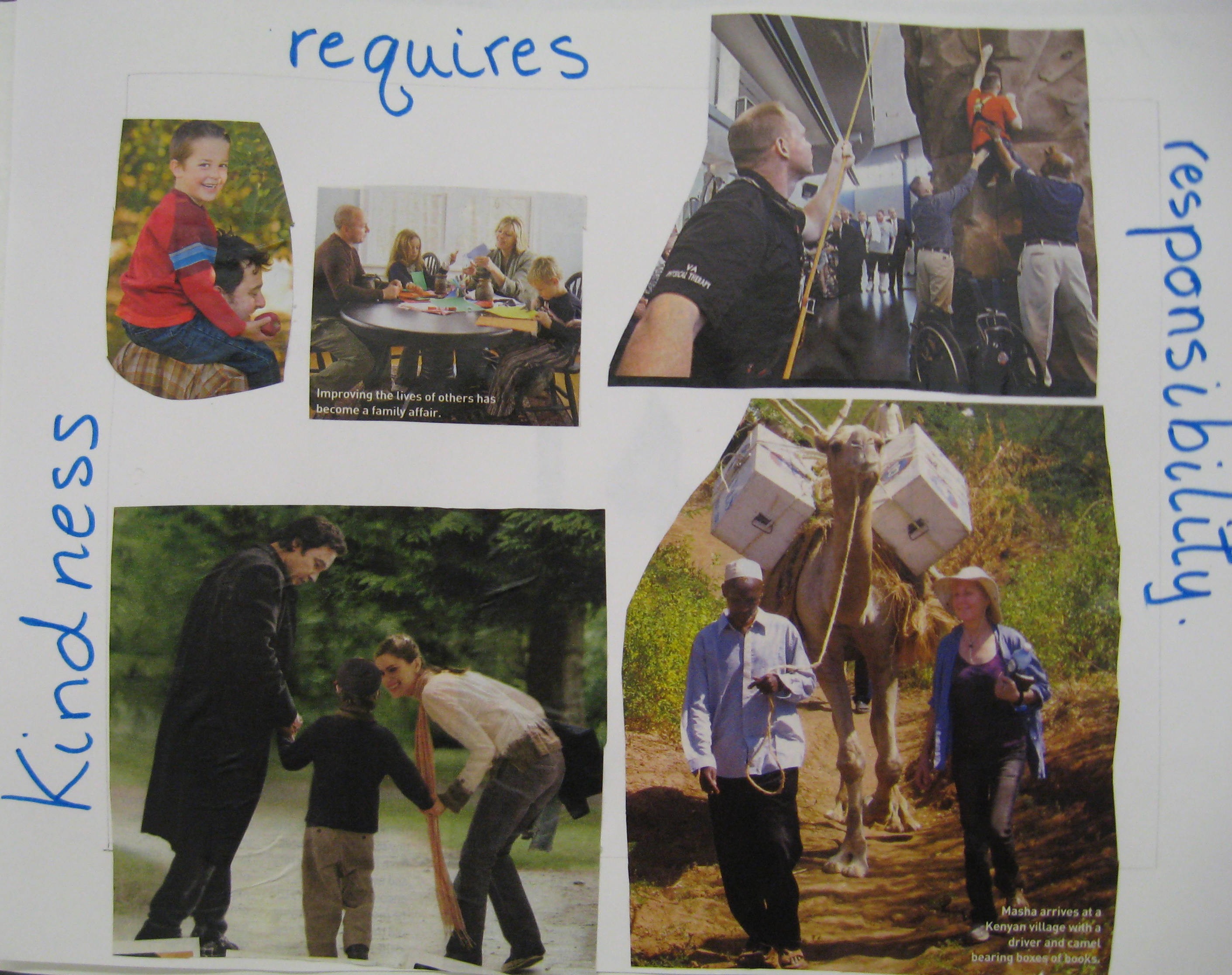 Once
groups agreed on their statement, they used magazine cut outs and markers
to illustrate it. The resulting artwork was then pasted onto a large copy
of the matrix which hangs in the school hallway.
Once
groups agreed on their statement, they used magazine cut outs and markers
to illustrate it. The resulting artwork was then pasted onto a large copy
of the matrix which hangs in the school hallway.
At the first meeting, one group worked on square number 14, the intersection of Responsibility and Kindness.
Their statement was simply, "Kindness Requires Responsibility." Their illustration shows that concept through images of volunteering, helping others, and people being in positive relationships.
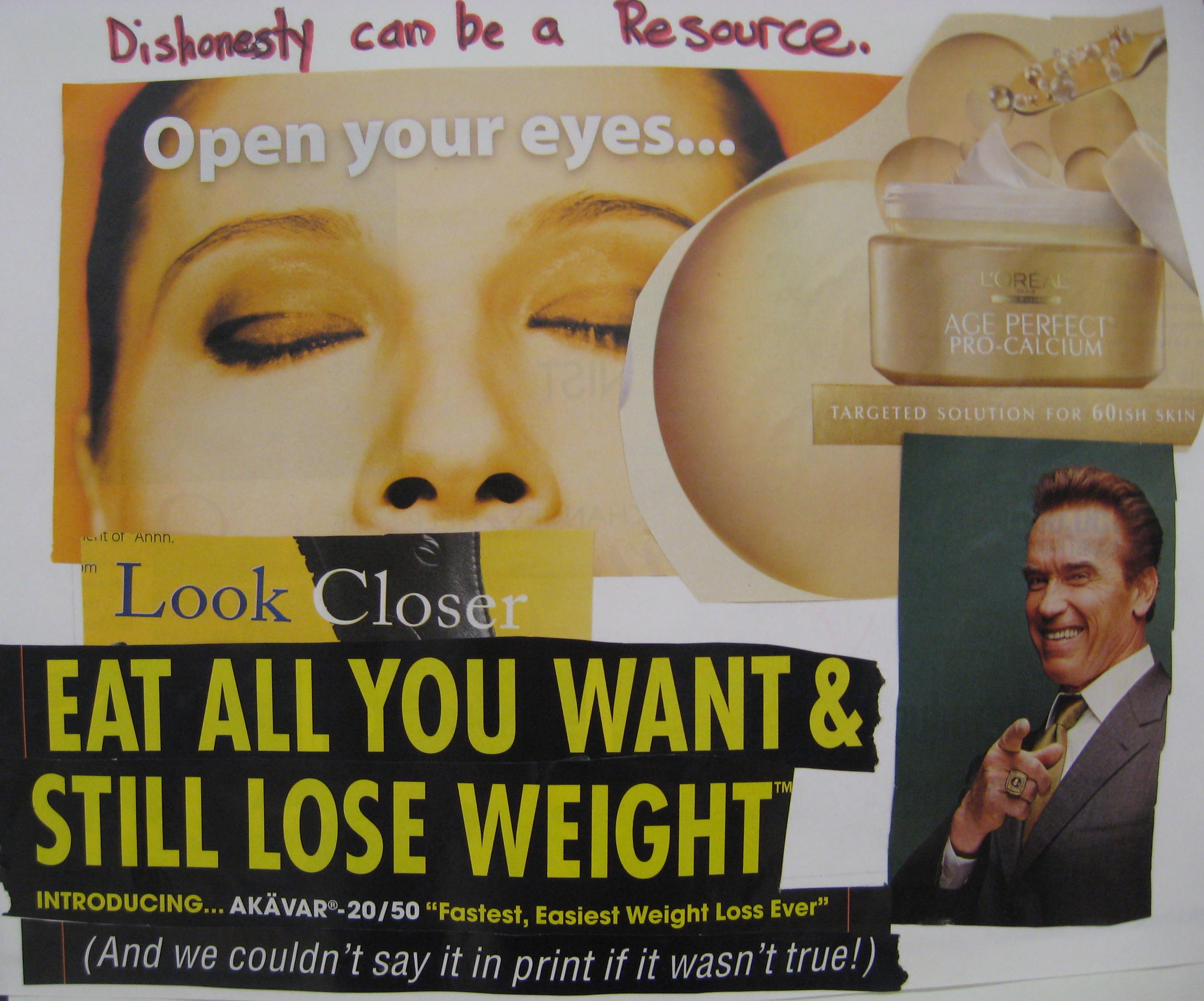
Another group chose to think about how Honesty and Resourcefulness might counteract each other (square number 6 in red).
They wrote, "Dishonesty Can Be a Resource."
They illustrated it with advertising pictures and slogans such as, "Eat all you want and still lose weight," and, "We couldn't say it in print if it weren't true."
Continuous
Conversations
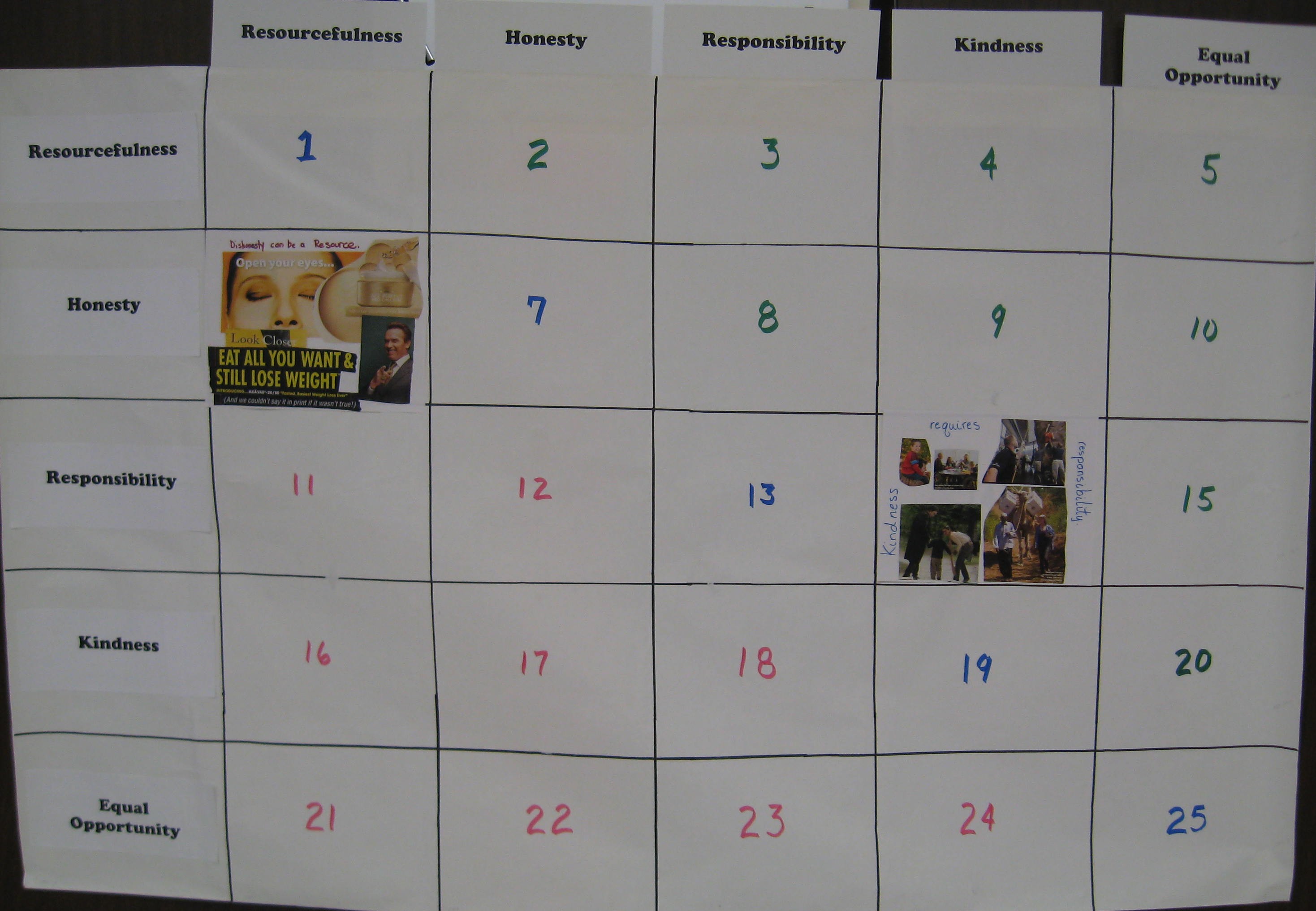
Today the matrix has become an on-going school project. It hangs in a high-traffic area where it beckons the curious and invites conversation.
Faculty members will add squares during staff meetings. Students at various grade levels can contribute squares during art class or as a community meeting activity.
And when the matrix is complete, a new one can be started fresh so that the conversation can continue as long as the values are important to the school. In this way, each conversation brings fresh clarity to the values keeping these important concepts alive.
There are many other ways to use a matrix to encourage dialogue, critical thinking, and learning. Sivasailam "Thiagi" Thiagarajan has a virtual warehouse full of ideas for using a matrix for both facilitation and teaching. Go to his web site for free or low cost ideas that are easily modified to your specific uses. You can also see how Monadnock Developmental Services, a client of ours, used a matrix to foster dialogue about self-determination for people with disabilities. Click HERE to see an interactive display of their guiding values.
Home
| Services
| Products
| Mission
| Ideas |
The Group
| The Buzz
(c)
2005 The Firefly Group